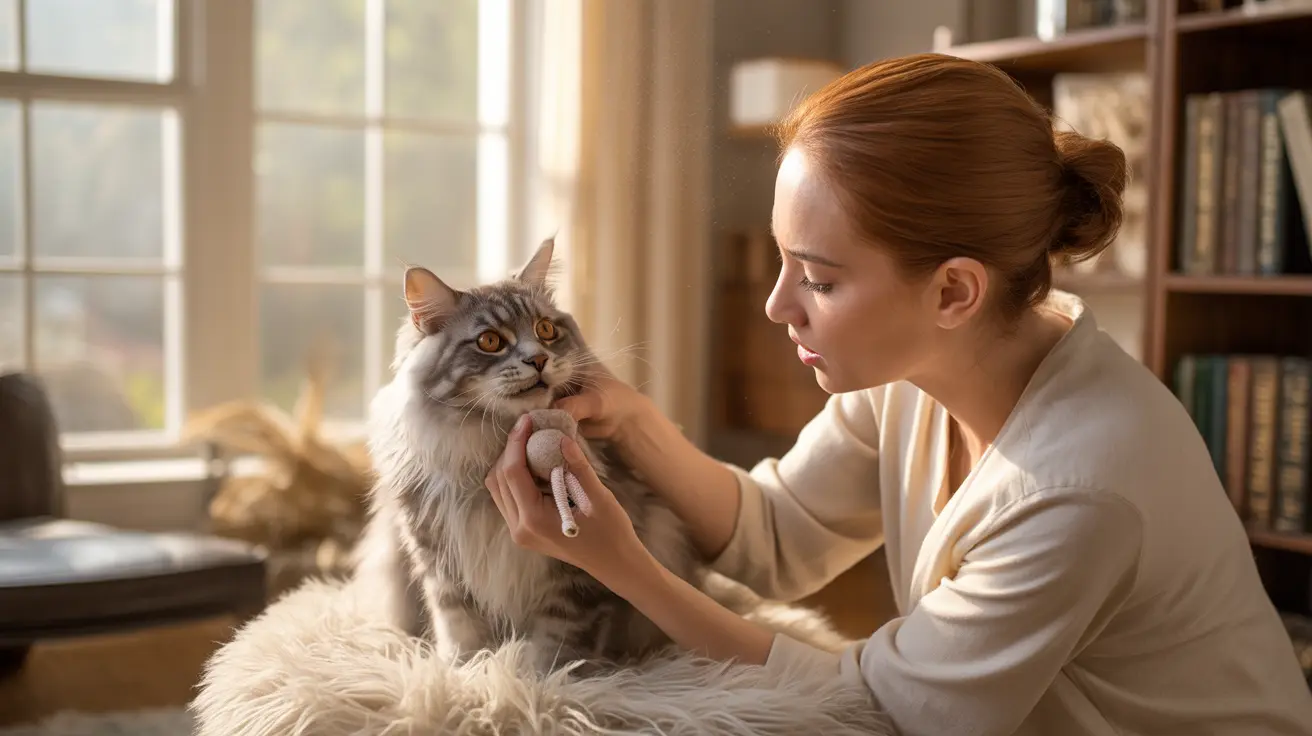When a cat is choking, every second counts. As a pet owner, knowing how to recognize and respond to this life-threatening emergency can mean the difference between saving your cat's life and tragedy. This comprehensive guide will walk you through the essential steps of helping a choking cat, from identification to emergency response and prevention.
Understanding how to help a choking cat requires both knowledge and preparation. Whether it's a foreign object, food, or a hairball causing the obstruction, quick and appropriate action is crucial. Let's explore the vital steps and information you need to handle this emergency situation effectively.
Recognizing the Signs of a Choking Cat
The first crucial step in helping a choking cat is identifying the emergency quickly. Common signs include:
- Excessive drooling or pawing at the mouth
- Coughing, gagging, or retching
- Open-mouth breathing or gasping
- Blue or pale gums (indicating oxygen deprivation)
- Extreme distress or panic
- Collapse in severe cases
If you notice any of these symptoms, particularly in combination, your cat likely needs immediate assistance. Remember that true choking is continuous until the obstruction is removed, unlike occasional coughing or gagging from hairballs.
Emergency Response Steps
Initial Assessment and Safety
Before attempting any intervention, quickly assess the situation while keeping yourself safe:
- Approach your cat calmly but quickly
- Use a towel to protect yourself from potential scratches or bites
- Try to keep your cat as calm as possible
- Check for visible obstructions in the mouth
Performing the Feline Heimlich Maneuver
If your cat is conscious and clearly choking, follow these steps:
- Hold your cat with their back against your chest, head up
- Locate the soft spot below their rib cage
- Give quick, gentle upward thrusts
- Check their mouth between attempts
- Continue until the object is dislodged or you reach emergency care
Prevention Strategies
The best way to handle choking emergencies is to prevent them. Implement these safety measures:
- Remove small objects that could be swallowed
- Use appropriate-sized food and treats
- Monitor play with toys, especially those with small parts
- Regular grooming to prevent hairball formation
- Keep dangerous items (string, rubber bands, etc.) out of reach
After the Emergency
Even if you successfully dislodge the object, veterinary care is essential. Your cat may have suffered internal injuries or require additional treatment. Watch for:
- Difficulty breathing
- Continued coughing or gagging
- Loss of appetite
- Unusual lethargy
- Continued drooling
Frequently Asked Questions
What are the most obvious signs that my cat is choking, and how can I tell the difference between choking and a hairball?
A choking cat will show continuous distress, gagging, and difficulty breathing, while hairball coughing typically comes in shorter episodes with normal breathing between. Choking cats may also show panic, drooling, and blue-tinted gums.
How do I safely perform the Heimlich maneuver on a choking cat at home, and when should I stop and rush to the vet?
Position your cat with their back against your chest, locate the soft spot below the ribs, and give quick, gentle upward thrusts. If there's no improvement after 2-3 attempts, or if your cat loses consciousness, seek emergency veterinary care immediately.
What common household items and foods pose the biggest choking risks for cats, and how can I cat-proof my home to prevent accidents?
Common hazards include string, rubber bands, small toys, buttons, and large food pieces. Cat-proof your home by storing small items securely, using appropriate-sized cat toys, and cutting food into manageable pieces.
Should I try to remove an object from my cat's throat myself, and what are the safest steps for a mouth sweep if my cat is choking?
Only attempt a mouth sweep if you can clearly see the object. Never blindly reach into your cat's throat. Use your finger to gently sweep from side to side, being careful not to push the object further down.
What should I do after my cat has stopped choking—do I need to visit the vet even if they seem fine, and what signs should I watch for at home?
Always visit the vet after a choking incident, even if your cat seems fine. Watch for difficulty breathing, coughing, lethargy, or loss of appetite, which could indicate complications or internal injury.
Remember, being prepared for emergencies is crucial for every cat owner. Keep emergency numbers handy and consider taking a pet first aid course to build confidence in handling critical situations like choking.






